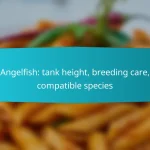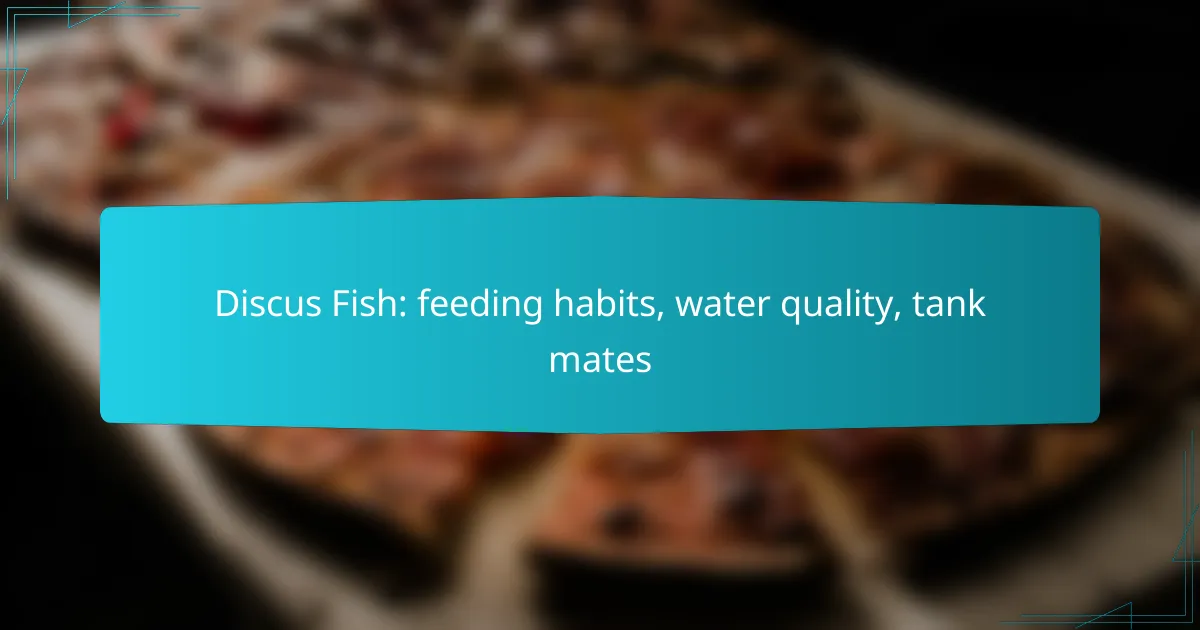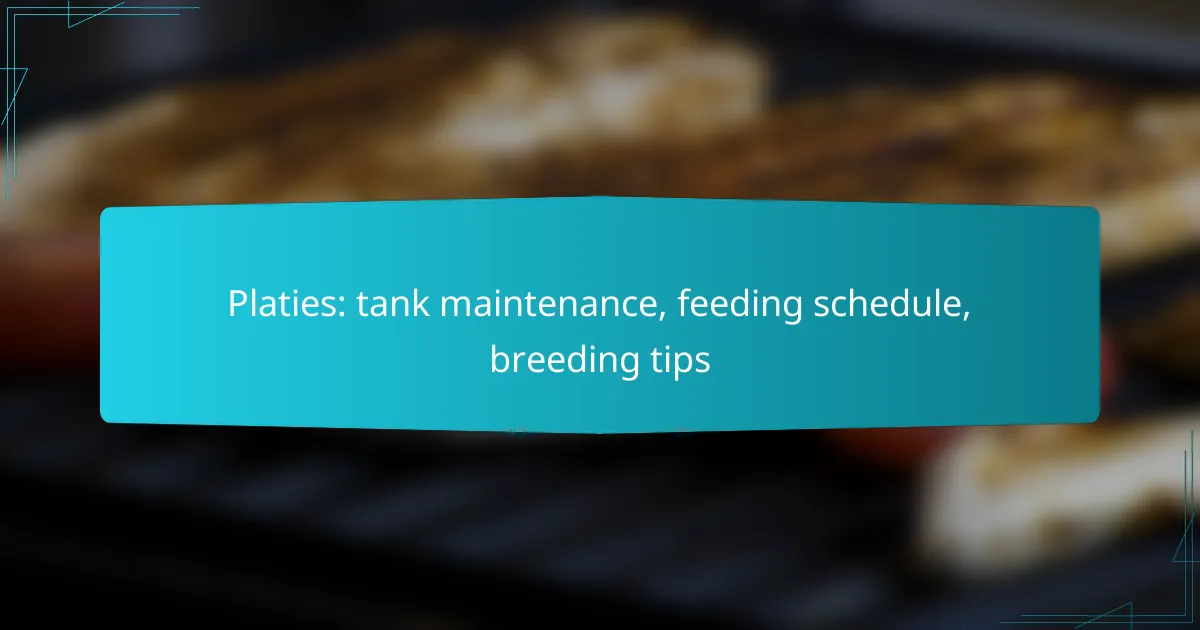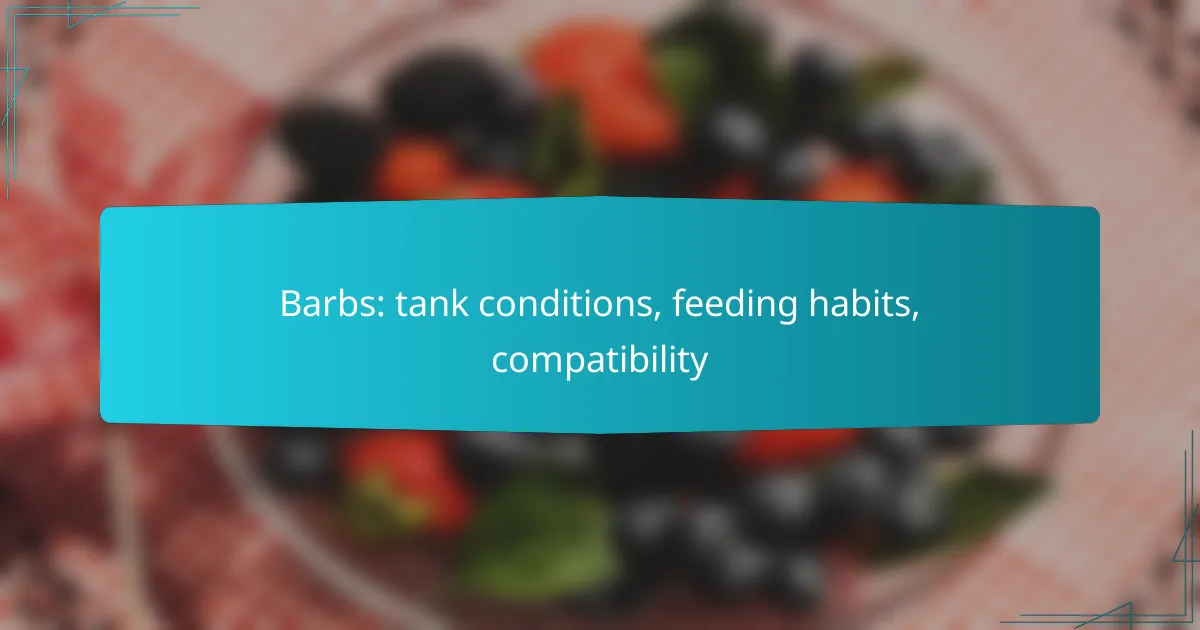Guppies are vibrant and popular freshwater fish that require specific breeding care and optimal tank conditions to thrive. Providing the right environment, including appropriate water parameters and tank size, is essential for their health and successful reproduction. Regular health monitoring is crucial, as it allows for early detection of potential issues, ensuring a flourishing aquarium ecosystem.

How to breed guppies successfully?
To breed guppies successfully, ensure you provide the right conditions, pairings, and tank setup. This will promote healthy reproduction and increase the chances of fry survival.
Optimal breeding conditions
Guppies thrive in warm water temperatures ranging from 24°C to 28°C (75°F to 82°F). Maintain a pH level between 6.8 and 7.8 for optimal breeding. Regular water changes and good filtration are essential for keeping the environment clean and stable.
Lighting also plays a role; a 12-hour light cycle mimics natural conditions and encourages breeding behavior. Additionally, ensure that the tank is well-planted, as plants provide hiding spots for fry and reduce stress for the breeding pair.
Best guppy pairings
For successful breeding, pair one male guppy with two to three females. This ratio helps reduce stress on the females and increases the likelihood of successful mating. Choose healthy, vibrant guppies with desirable traits to enhance the quality of the offspring.
Consider the genetic background of your guppies to avoid inbreeding. Mixing different strains can lead to more diverse and resilient fry. Look for pairs that exhibit strong colors and patterns to pass on to the next generation.
Breeding tank setup
Set up a dedicated breeding tank with a capacity of at least 20 liters (5 gallons) to provide ample space for the guppies. Use a sponge filter to maintain water quality without risking harm to the fry. Avoid gravel substrate, as it can trap debris; instead, opt for a bare bottom or fine sand.
Add plenty of live or artificial plants to create hiding spots for the fry. A breeding box or net can be useful for separating the fry from adult guppies after birth, preventing them from being eaten. Monitor the tank closely for any signs of stress or illness in the breeding pair.
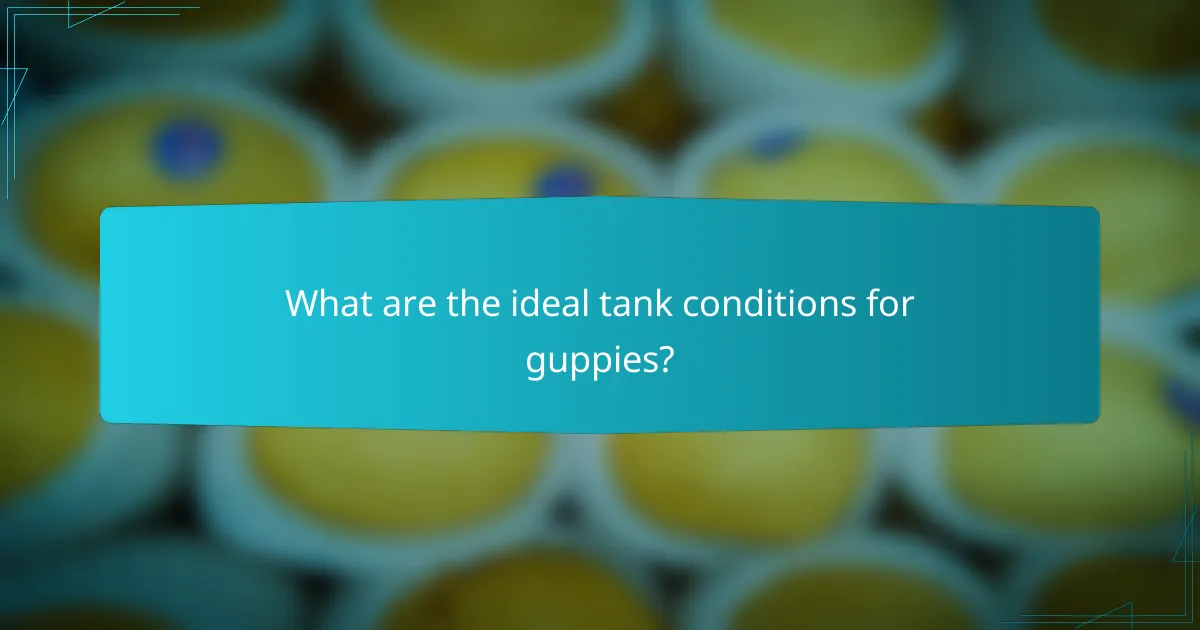
What are the ideal tank conditions for guppies?
The ideal tank conditions for guppies include maintaining specific water temperature, pH levels, and tank size to ensure their health and well-being. Proper conditions not only promote growth but also enhance breeding success and overall vitality.
Water temperature range
Guppies thrive in water temperatures between 24°C and 28°C (75°F to 82°F). Keeping the temperature within this range helps prevent stress and supports their metabolic functions. Sudden temperature fluctuations should be avoided, as they can lead to health issues.
To maintain the ideal temperature, consider using a reliable aquarium heater and a thermometer. Regularly check the temperature to ensure it remains stable, especially during seasonal changes.
pH level requirements
The optimal pH level for guppies is between 6.8 and 7.8. This range mimics their natural habitat and supports their overall health. Regular testing of the water pH is essential to prevent any drastic changes that could harm the fish.
If the pH level is too low or too high, consider using pH adjusters or natural methods like adding driftwood or certain substrates to stabilize the levels. Always make adjustments gradually to avoid shocking the fish.
Tank size recommendations
A minimum tank size of 40 liters (10 gallons) is recommended for a small group of guppies. This size allows for adequate swimming space and helps maintain water quality. Overcrowding can lead to stress and increased waste, which can harm the fish.
For larger groups or breeding setups, consider larger tanks, as they provide better filtration and stability. A well-planned tank setup with plants and hiding spots can also enhance the environment for guppies, promoting natural behaviors and reducing stress.

How to monitor guppy health?
Monitoring guppy health involves observing their behavior, appearance, and tank conditions regularly. Early detection of health issues can prevent serious problems and ensure a thriving aquarium environment.
Signs of illness
Guppies exhibit various signs when they are unwell. Look for changes in behavior such as lethargy, loss of appetite, or hiding more than usual. Physical symptoms may include discoloration, frayed fins, or abnormal swimming patterns.
Additionally, watch for signs of distress like rapid gill movement or floating at the surface. Keeping a close eye on these indicators can help you address health issues promptly.
Regular health checks
Conducting regular health checks is essential for maintaining guppy well-being. Aim to inspect your guppies at least once a week, observing their physical condition and behavior closely. Note any changes from their normal state.
During these checks, also assess the tank environment, including water quality, temperature, and cleanliness. Maintaining optimal conditions is crucial for preventing health issues.
Common diseases
Guppies are susceptible to several common diseases, including ich, fin rot, and velvet disease. Ich is characterized by white spots on the skin, while fin rot appears as frayed or discolored fins. Velvet disease presents as a gold or rust-colored dust on the fish’s body.
To prevent these diseases, maintain good water quality and avoid overcrowding. If you notice symptoms, consider isolating affected fish and treating them with appropriate medications available at pet stores.

What are the best foods for guppies?
The best foods for guppies include a mix of high-quality commercial options and nutritious homemade recipes. A balanced diet ensures healthy growth, vibrant colors, and overall well-being for these lively fish.
Commercial guppy food options
Commercial guppy foods typically come in flakes, pellets, or granules specifically formulated for small tropical fish. Look for options that list high protein content, as guppies thrive on protein-rich diets, especially during their growth phases.
Popular brands often include ingredients like spirulina, fish meal, and vegetable matter. It’s wise to rotate between different brands to provide a varied diet, which can help prevent nutritional deficiencies.
Homemade food recipes
Homemade food for guppies can be both nutritious and cost-effective. A simple recipe includes blending cooked peas, spinach, and a small amount of fish flakes, then freezing the mixture in ice cube trays for easy feeding.
Another option is to create a gel food using agar-agar, which can be mixed with finely chopped vegetables and proteins. Ensure any homemade food is finely chopped to prevent choking and is consumed within a few days to avoid spoilage.
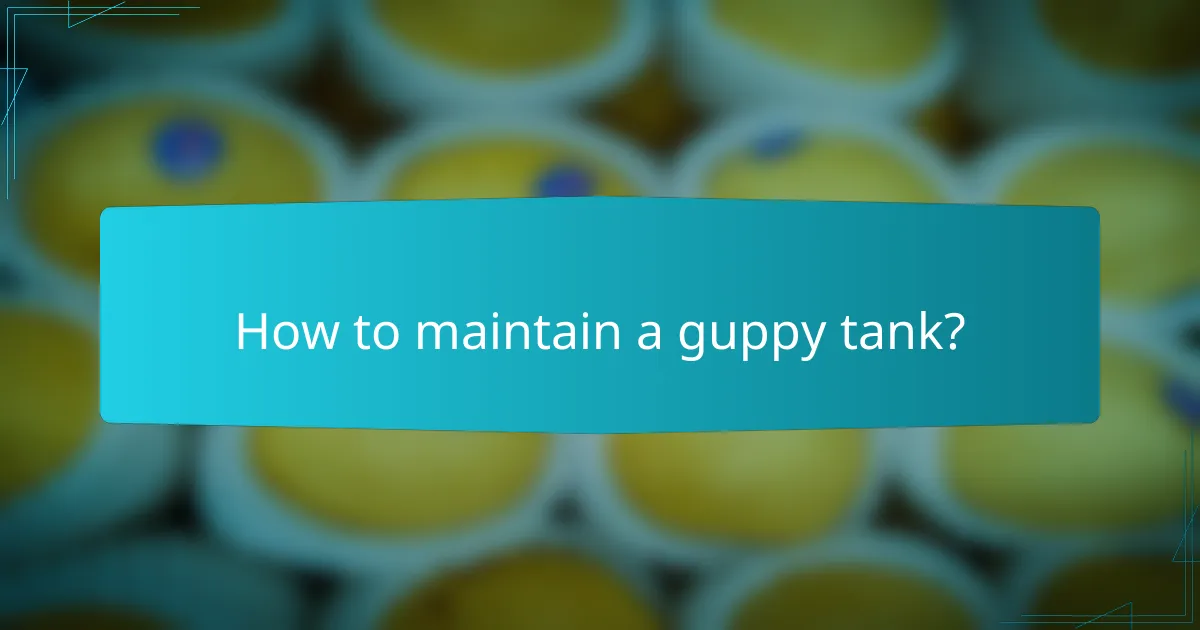
How to maintain a guppy tank?
Maintaining a guppy tank involves ensuring optimal water quality, appropriate filtration, and regular cleaning. These factors are crucial for the health and well-being of your guppies.
Water change frequency
Regular water changes are essential for maintaining a healthy guppy tank. Aim to change about 10-20% of the water weekly to remove toxins and replenish essential minerals.
In heavily stocked tanks or during warmer months, consider increasing the frequency to twice a week. Always use a water conditioner to neutralize chlorine and chloramines before adding tap water.
Filtration system types
Choosing the right filtration system is vital for guppy care. Common types include sponge filters, hang-on-back filters, and canister filters, each offering different benefits.
Sponge filters are excellent for breeding tanks due to their gentle flow and biological filtration. Hang-on-back filters provide good mechanical and chemical filtration, while canister filters are ideal for larger setups, ensuring high water turnover.
Tank cleaning tips
Regular tank cleaning helps prevent algae growth and maintains water quality. Use a gravel vacuum during water changes to remove debris and uneaten food from the substrate.
Clean the tank walls with an algae scraper and replace filter media as needed, typically every few months. Avoid using soaps or chemicals, as they can harm your guppies.
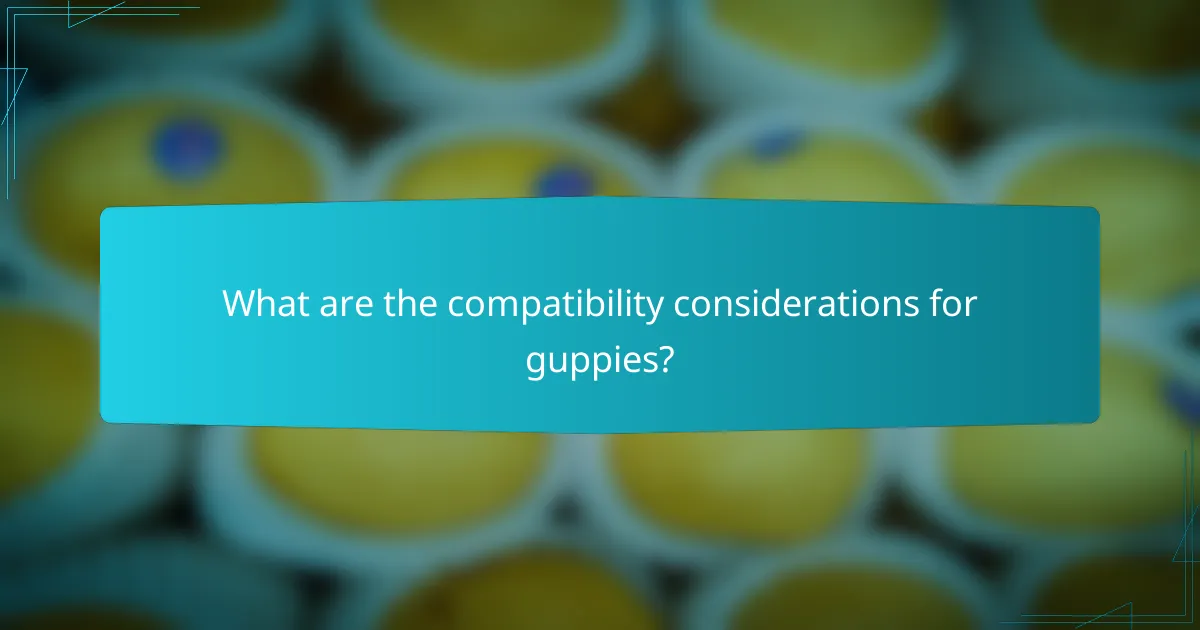
What are the compatibility considerations for guppies?
Guppies are generally peaceful fish, making them suitable for community tanks. However, compatibility depends on the temperament and size of potential tank mates, as well as the specific needs of guppies.
Compatible tank mates
When selecting tank mates for guppies, consider species that share similar water parameters and temperament. Ideal companions include small, non-aggressive fish such as neon tetras, rasboras, and other livebearers like mollies and platies.
Avoid larger or aggressive fish, such as cichlids or bettas, as they may bully or prey on guppies. Additionally, ensure that the tank is spacious enough to accommodate all species comfortably, ideally providing at least 10 gallons for a small community setup.
Regularly monitor interactions among tank mates to prevent stress and aggression. If any fish show signs of bullying, be prepared to separate them to maintain a harmonious environment.





